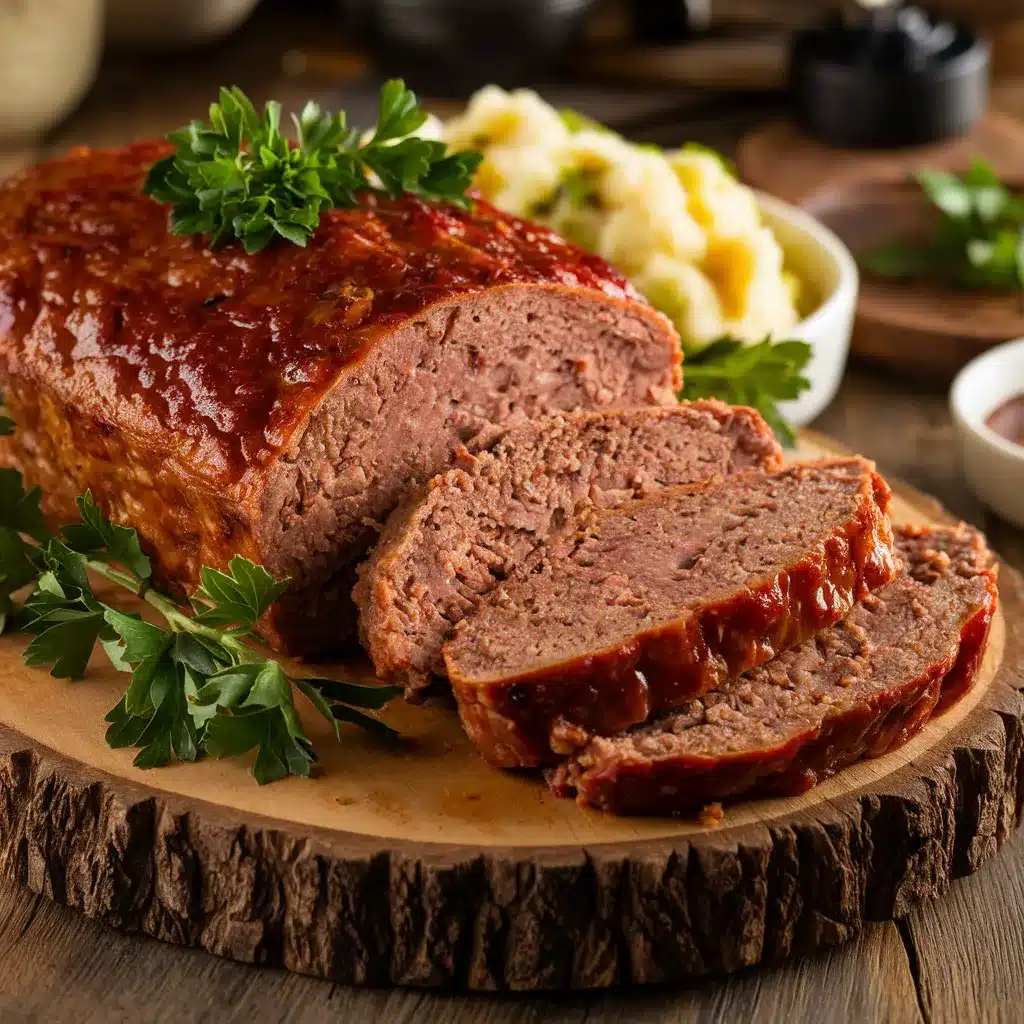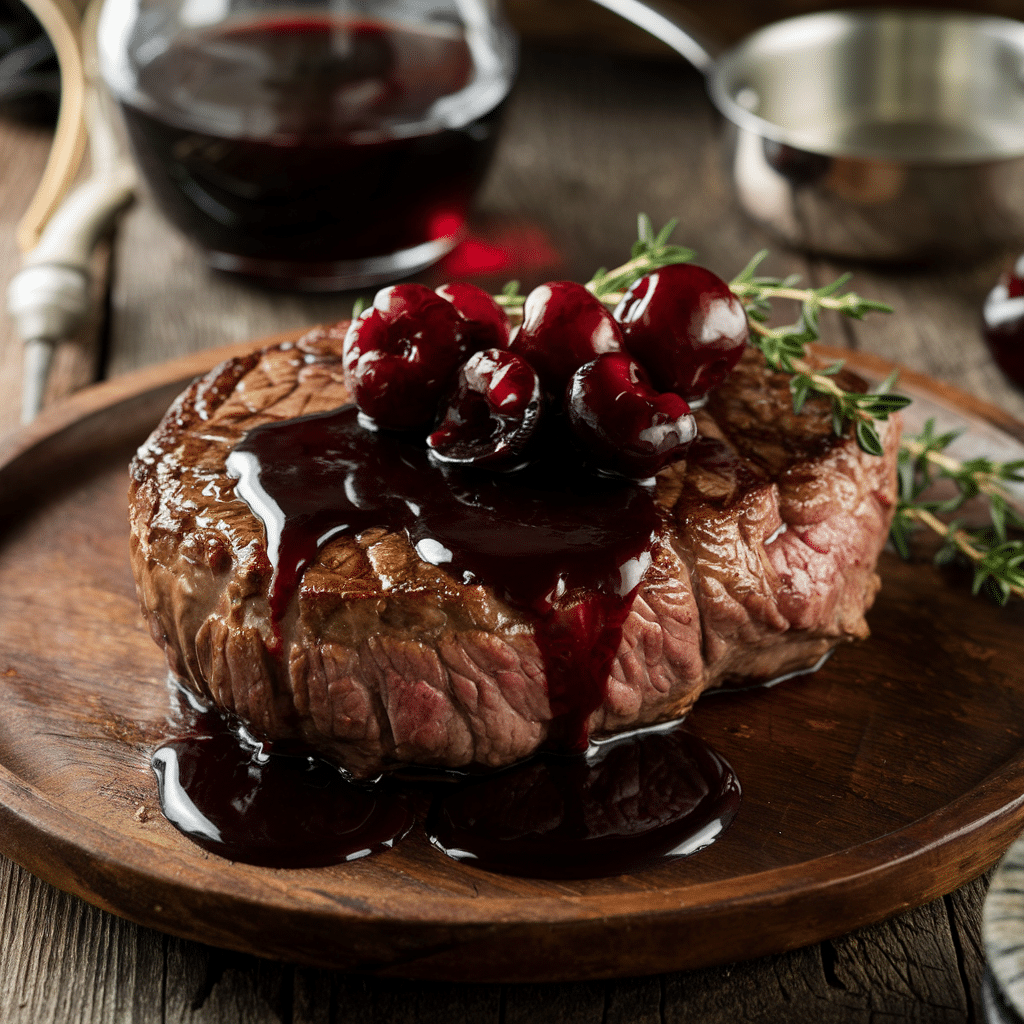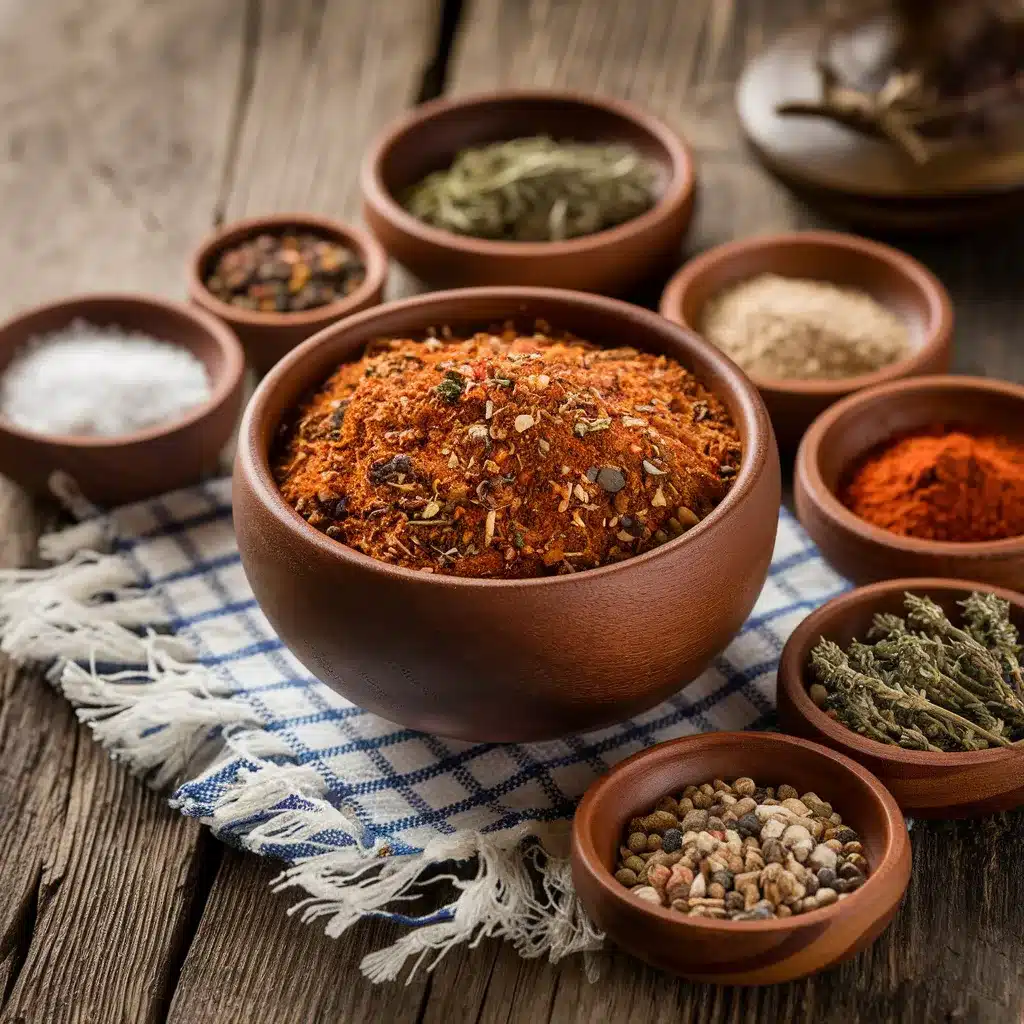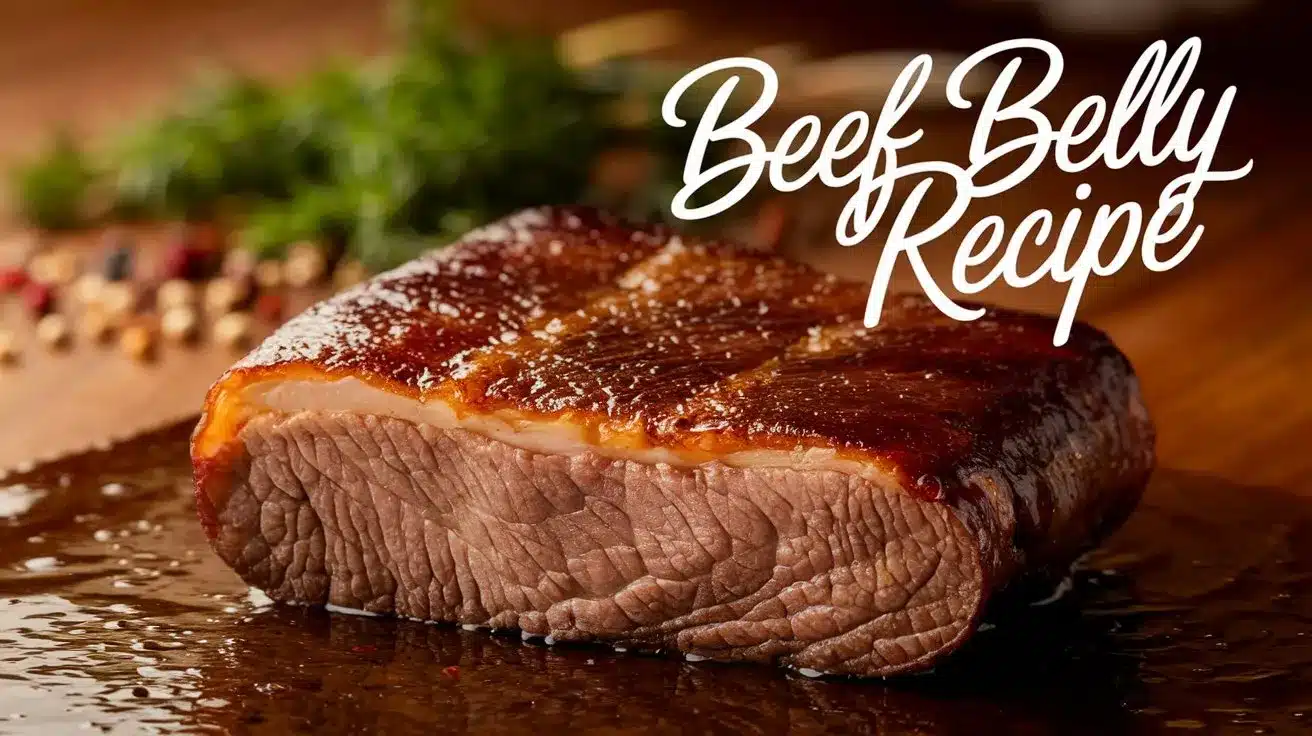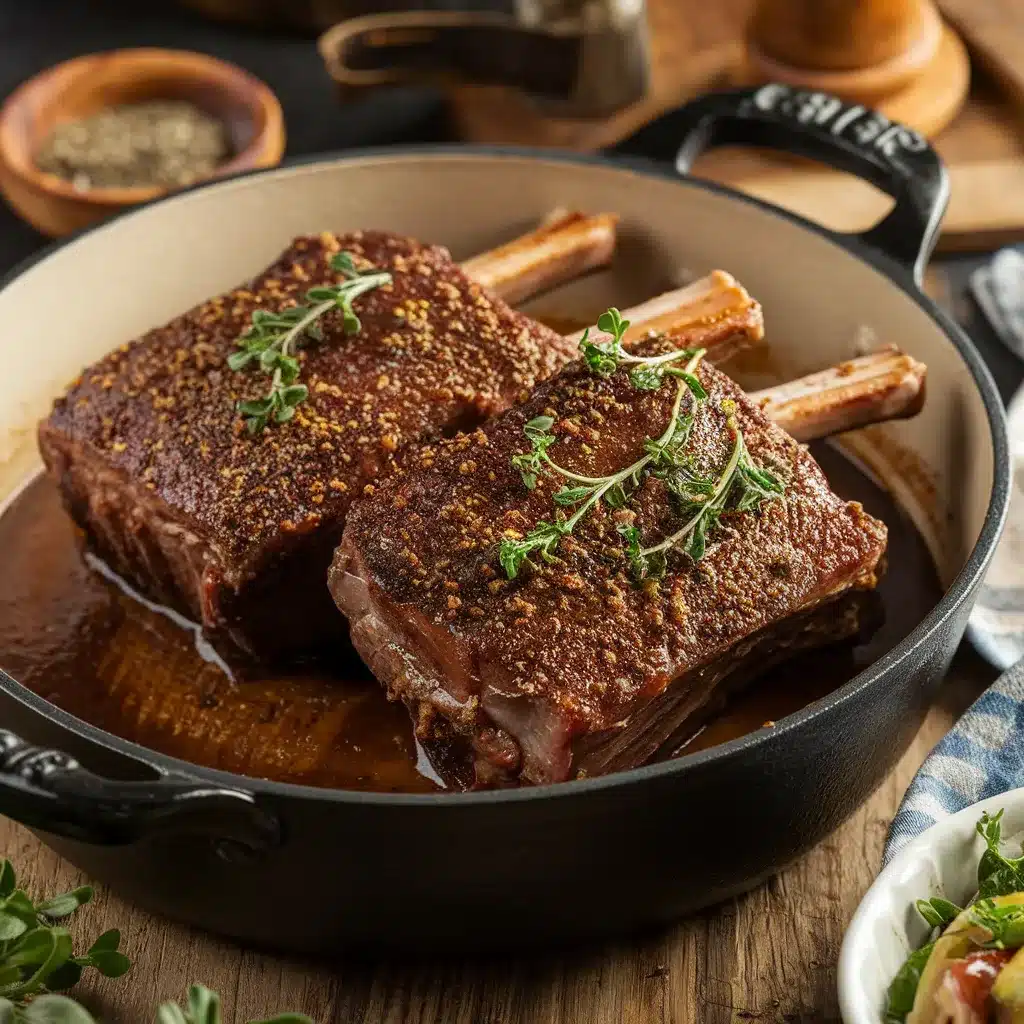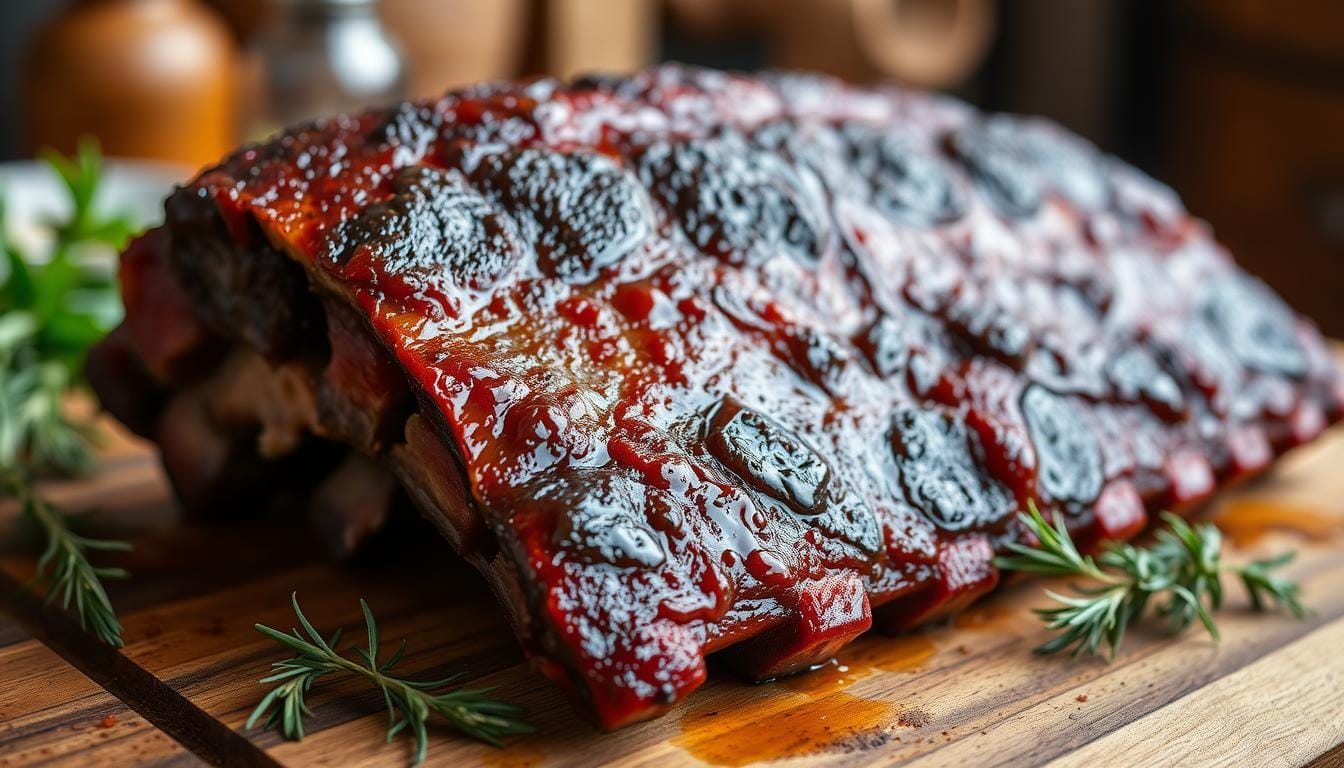Perfect Rare Prime Rib Roast

A rare prime rib roast is the ultimate centerpiece for holidays, special gatherings, or any night dedicated to serious steak lovers. What makes this version exceptional is its tenderness: cooking the roast rare allows the marbling to stay juicy, the meat to remain buttery soft, and the flavor to stay rich and beefy. When done properly, the inside stays a perfect rosy pink while the exterior develops a beautifully dark crust.
f you enjoy impressive cuts of beef, you might also like my Tomahawk Steak Recipe, which delivers the same restaurant-style wow factor. When done properly, this prime rib stays perfectly rosy pink inside with a beautifully dark crust on the outside.
Table of Contents

Ingredients You Need
To make a prime rib that looks just like a picture-perfect restaurant roast, you’ll need:
- A whole prime rib roast (bone-in for extra flavor or boneless for easier slicing)
- Kosher salt and coarse black pepper
- Garlic powder or finely minced fresh garlic
- Optional fresh herbs like rosemary and thyme
- Butter or beef tallow to help build that final golden crust
These simple ingredients are all you need — the roast itself provides most of the flavor.
Prep Before Cooking
Preparation is the key to getting an evenly pink interior.
- Bring the roast to room temperature: Let it rest on the counter for 2–3 hours. This prevents cold spots and ensures it cooks evenly.
- Trim excess fat (optional): Leave most of the fat cap, but remove any thick, hard pieces that won’t render.
- Season heavily: Prime rib is thick, so don’t be shy. Coat all sides generously with salt, pepper, and garlic.
- Dry-brine for a better crust: If possible, season the roast and refrigerate it uncovered for 12–24 hours. This dries the exterior slightly, helping it brown beautifully.
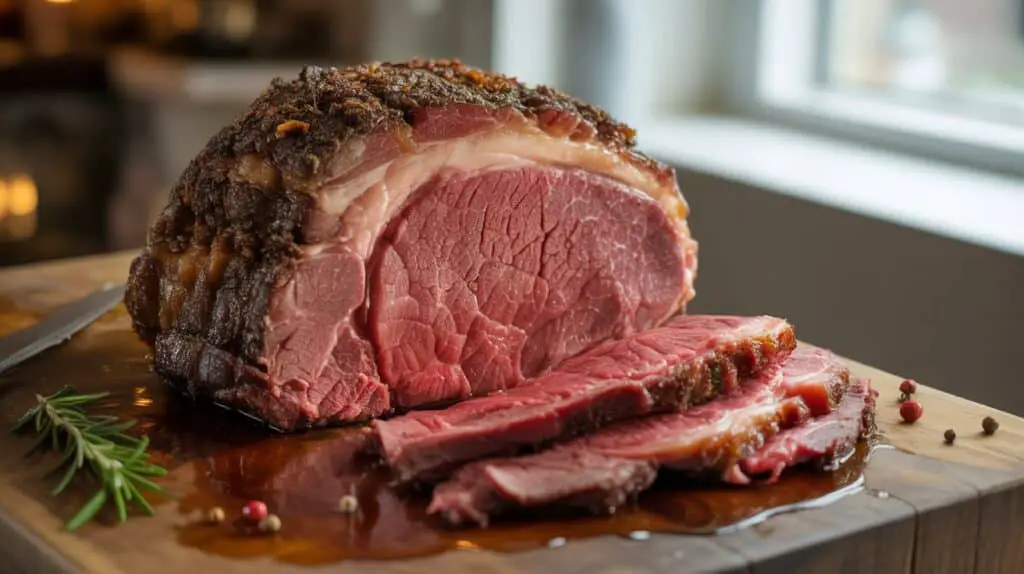
The Cooking Method (Low & Slow)
Slow roasting guarantees a soft, melt-in-your-mouth center.
- Oven setup: Preheat the oven to a low temperature (around 225°F / 107°C). Place the roast on a wire rack in a roasting pan.
- Positioning: Place the roast fat-side up so the fat melts over the meat as it cooks.
- Roasting: Cook until the internal temperature reaches 118–122°F (48–50°C) for perfect rare. Using a meat thermometer is essential.
- Resting: Remove the roast and let it rest for 20–30 minutes. This stabilizes the juices and brings the final temperature up slightly without overcooking.
Searing for the Crust
Once the inside is perfectly rare, it’s time to create that dark, crackly crust.
- High-heat blast: Increase the oven to 500°F / 260°C and roast for 6–10 minutes.
- Broiler: A quick broil can also create a deep crust, but watch closely.
- Hot pan: Alternatively, sear the exterior in a heavy cast-iron skillet with butter or beef tallow.
The goal is to brown the outside fast, without letting the inside cook further.
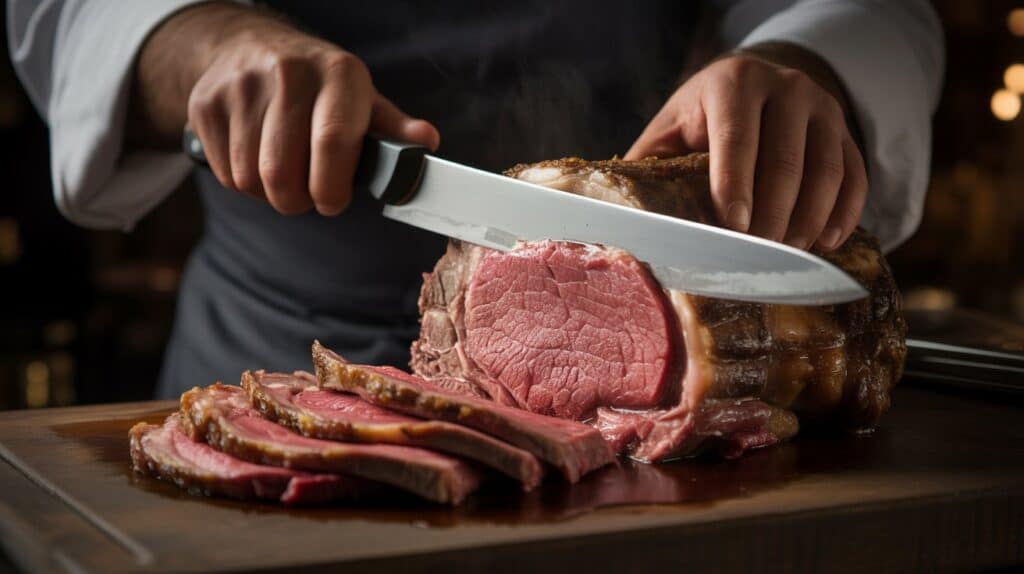
Carving & Presentation
To get slices that look clean and as perfect as the photo:
- Use a long, sharp slicing knife (not a serrated one).
- Cut thick slices, around ¾–1 inch, for the most impressive presentation.
- If using a bone-in roast, remove the bones in one piece before slicing — this keeps the meat intact and easier to portion.
Serve on a platter with the juices poured lightly over the top.
Sauce & Side Options
A great prime rib doesn’t need much, but these classics pair perfectly:
- Au jus: Simple beef juices from the pan, warmed with broth.
- Creamy horseradish: Cuts through the richness.
- Sides: Roasted potatoes, mashed potatoes, Yorkshire pudding, grilled asparagus, or sautéed green beans.
Storage & Reheating
Rare meat can easily overcook when reheated, so handle leftovers gently.
- Storage: Wrap slices in foil or place in an airtight container with a little au jus to keep moisture.
- Best reheating method: Warm gently in a low oven (250°F / 120°C) for a few minutes or place slices in a sealed bag and dip in hot water.
- Avoid: Microwaving — it turns rare meat gray and chewy.
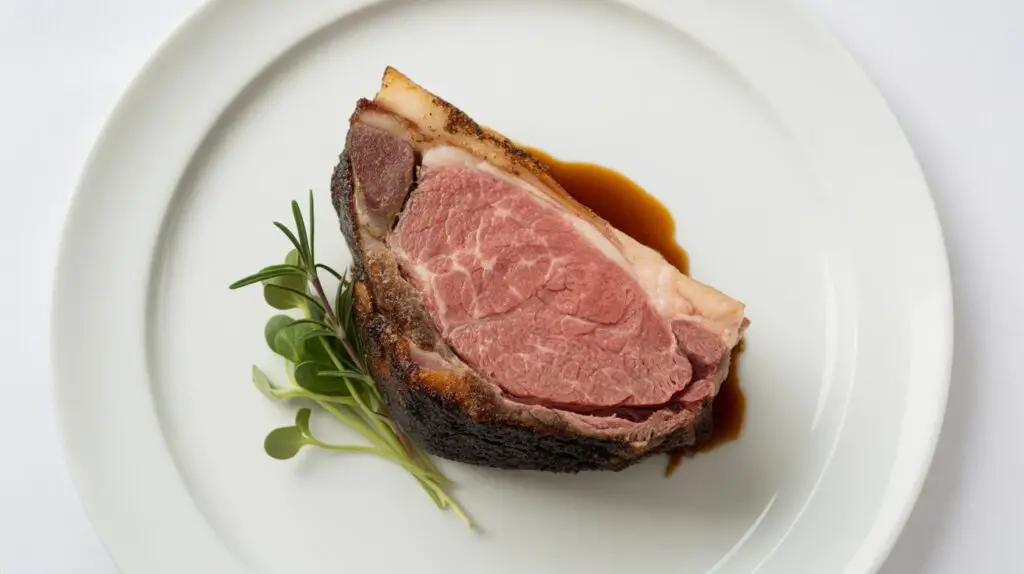
FAQ
Why is the inside so pink?
Because rare prime rib is cooked slowly and pulled at a low internal temperature, giving it that signature uniform rosy color.
Is rare prime rib safe?
Yes — as long as the outside is properly seared and the roast is handled safely, rare is perfectly safe for whole cuts of beef.
Bone-in vs. boneless: what’s better?
Bone-in often delivers better flavor and moisture, while boneless is easier to slice and serves more evenly. Both work beautifully.
For another impressive cut, try my Tomahawk Steak Recipe

